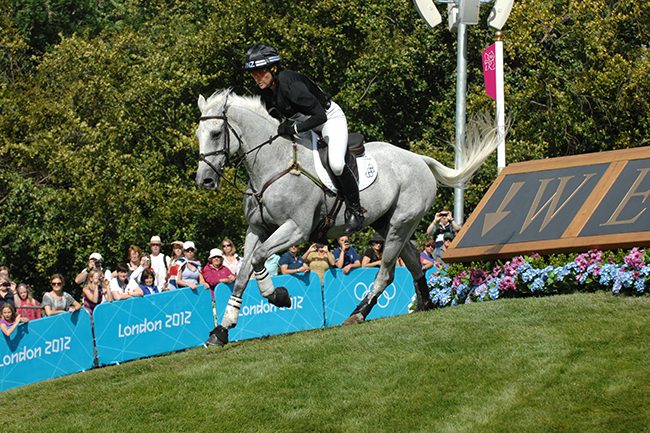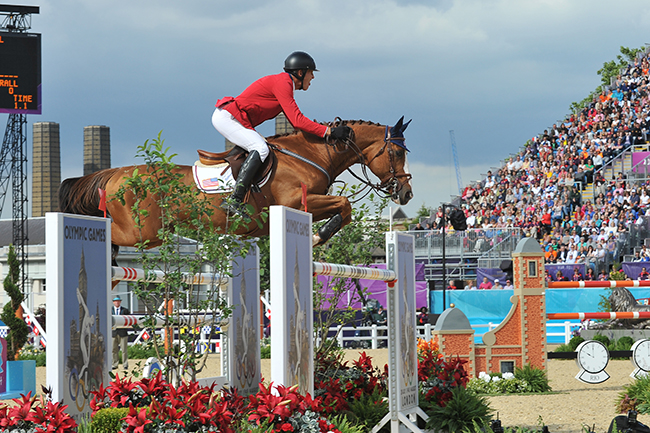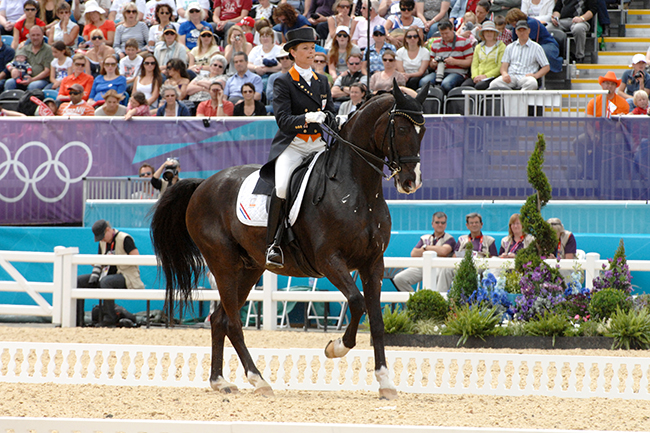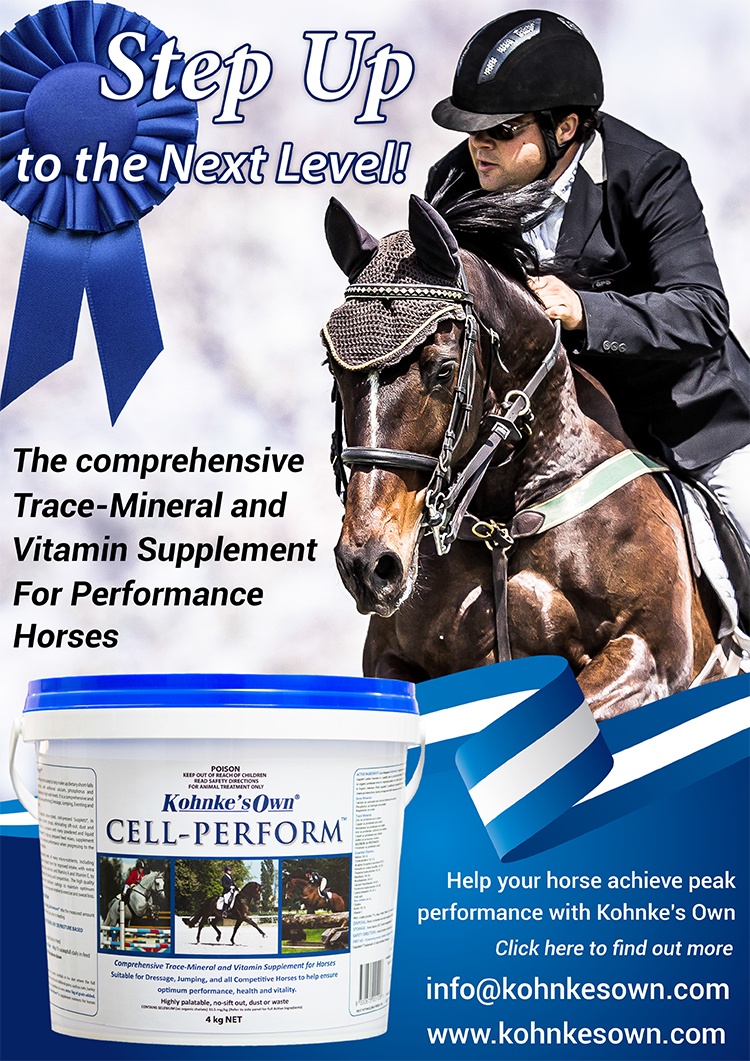There are lots and lots of older horses out there, still competing in their prime. Equine nutrition expert, Liz Owens looks at how you can prolong the competitive career of your favourite equine…
Like humans, horses are remaining sounder and more active later in life due to a variety of factors including genetics, more targeted and managed training regimes, improved health care and greatly improved nutritional management.
In the 2012 London Olympics, the equestrian events were well represented by “older” equines. Of the 74 horses that started the eventing competition, 17 (almost 23%) were >15 years of age with the oldest being a 20 year old. Two of Germany’s Gold Medal winning team were 15 years of age or older. In the dressage competition, 24% of the 50 horses were 15 years of age or older including two of three medal winners. The oldest dressage competitor was 18 years old.
A survey in 2002 confirmed that between 7 and 15% of the US equine population was > 20 years old in that year, 63% were still participating in regular athletic activities and 10% were still competitive 1.

Lenamore – 20 years old at the London Games
The term “geriatric” is not appropriate to describe older equine athletes as this term is used in reference to an older human with some disease. An “aged” horse is more appropriate but there is some dispute as to when a horse may be classified as being aged. It used to be that a horse was considered aged when he attained 8 years of age and some stud books consider horses to be automatically deceased at 25 years of age. Given the statistics above from the most recent Olympic Games, it is apparent that many horses are still at their competitive peak in their late teens. An individual, be that human or horse, is considered demographically aged when no more than 75% of the population survive to that age. That individual is considered very old when no more than 25% of the population is surviving at that age. By this definition, a 20 year old horse may not be “very old” but is certainly aged. We are going to look at the physiological changes in aged horses and how those changes may be catered for in the daily diet for horses that are still in training and/or competing.
Horses age differently to humans
Horses do age differently to humans. By comparison with us, they have quite abbreviated childhoods, lengthy and active adulthoods, then decline rapidly to succumb to some brief terminal illness. The average lifespan of a horse is said to be about 24 years; but as with humans, a horse’s chronological age isn’t always a good indicator of how old he really is. Some horses still are active at the age of 35, while others suffer significant signs of aging at 15.
Age-related physiological changes
There are multiple physiological changes in horses associated with ageing. There is a decline in insulin-like growth factor (IGF-I) concentrations in aged horses2 and that aging appears to alter metabolic control, endocrine and immune functions in horses3. In addition, older horses have been shown to undergo changes in the type of muscle fibre that would normally reflect their transition to a less active lifestyle3. This change is away from an aerobic profile with a commensurate decline in aerobic exercise capacity.
Other physiological changes associated with aging in a working horse are reduced respiratory function, believed to attributable to a lifetime exposure to allergens and irritants in addition to the development of chronic obstructive pulmonary disorder, and a reduction in cardiovascular capacity. It has been shown that aged horses have a reduction in VO2max and a corresponding reduced capacity to tolerate high intensity exercise4. An age-related decline in HRmax and maximal stroke volume was also observed although this trend could be partially reversed through training. Work by McKeever3 suggests that older horses are not able to thermoregulate as well as younger horses during exercise showing a faster increase in core temperature following a standard test. The older horses also showed an increased heart rate and associated increase in sweat production compared to younger horses. 
Flexible – 16 years old at the 2012 Olympics
There have been limited studies on the effects of training on aged horses in regard to their glucose and insulin response following acute exertion but one study did find that older horses required a greater concentration of insulin to successfully respond to an oral glucose tolerance test. Training influenced the insulin responses more in the aged horses but glucose response was no different in any of the horses regardless of age. This was interpreted as suggestive of an improvement in insulin sensitivity in the older horses5.
No discussion on aged horses would be complete without some mention of Pituitary pars intermedia dysfunction (PPID) commonly referred to as Cushing’s. This is a common endocrine disorder caused by the loss of dopamine inhibition on the pituitary gland following the development of a tumour on the pituitary. This condition is rarely seen in horses less than 15 years old and is most common in horses 20 years and older6. Development of insulin resistance is also common in aging horses leading to equine metabolic syndrome, laminitis and obesity. 
Salinero – 18 years old at London
read on below
Management of these changes
Well managed older equine athletes maintain their performance level through careful management of some of these inevitable physiological changes that occur with age, such as:
– Change in training practices to influence insulin response
– Adjust exercise to suit change in muscle fibres
– Feed damp feeds to limit dust
– Avoid high intensity exercise
– Avoid work in hot/humid conditions
– Increase electrolyte supplementation
Many of these changes have formed the basis of formulations specifically targeted to still active aged horses in the creation of a growing number of “Senior” diets. The common features of these diets can be summarized as follows;
– Diets catering to horses less likely to be involved in prolonged aerobic exercise characterized by perhaps lower oil content, higher levels of digestible fibre and increased employment of processing to ensure maximization of pre-ileal starch digestibility in any grain sources.
– Increased energy density to cater to those individuals suffering from reduced bodyweight. The energy source employed will be dependent on the existence of any underlying metabolic disorders.
– Fibre sources are more digestible and less lignified for older horses – especially those suffering from compromised dentition.
– Feeds are low dust and ideally fed dampened to reduce the challenge to individuals with reduced lung capacity.
– Excessive calcium intake avoided since aged horses have reduced phosphorus digestibility7.
– Increased electrolyte supplementation compared to younger horses during periods of work.
– Increased addition rates for antioxidants such as Vitamin C and E.
As with any horse, the diet must also be designed to cater to desired body condition score and level of work but consideration of the particular physiological changes brought with age is crucial in formulation of a diet that will prolong the active years of an aged horse.
References:
1. Paradis, M. R. (2002). Demographics of health and disease in the geriatric horse. Vet Clinic Equine.18 391-401
2. Malinowski K, C. R. (1996). Age and breed differences in thyroid hormones, insulin-like growth factor-1 and IGF binding proteins in horses. J Anim Sci, 1936-1942.
3. McKeever KH (2002). Exercise physiology of the older horse. Vet. Clinic. Equine. 18, 469-490.
4. Betros CL, McKeever KH, Kearns CF et al (2002). Effects of aging and training on maximal heart rate and VO2max. Equine Vet J Suppl 34, 100-105.
5. Malinowski, K., Betros C.L., Flora L, Kearns C.F. and McKeever K.H. (2002)
Effect of training on age- related changes in plasma insulin and glucose. Equine Vet J Suppl. (34):147-53.
6. McGowan, C. (2009) Endocrine disorders in the geriatric horse. Proc. British Equine Vet. Assoc. Congress 48:144
7. Ralston, S.L. 1989. Digestive alterations in aged horses. J. Equine Vet. Sci. 9:203-205


